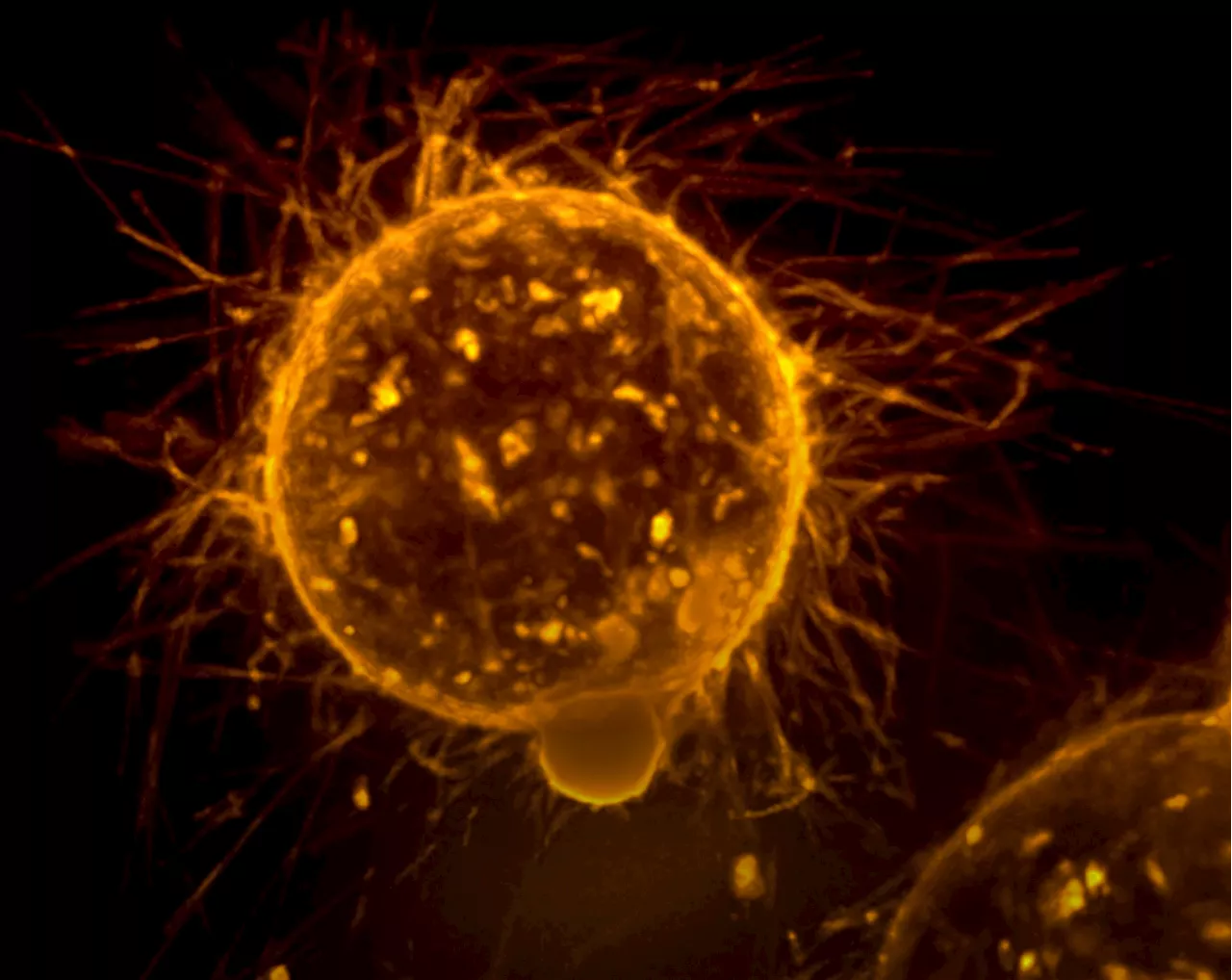CRISPR/Cas9 gene editing has made possible a multitude of biomedical experiments, including studies that systematically turn off genes in cancer cells to look for ones that the cancer cells heavily depend on to survive and grow. These genes, or 'cancer dependencies,' are often promising drug targets.
Some CRISPR screens may be missing cancer drug targets retrieved 17 June 2024 from https://phys.org/news/2024-06-crispr-screens-cancer-drug.html
This document is subject to copyright. Apart from any fair dealing for the purpose of private study or research, no part may be reproduced without the written permission. The content is provided for information purposes only.Oct 31, 2017Use this form if you have come across a typo, inaccuracy or would like to send an edit request for the content on this page. For general inquiries, please use ourThank you for taking time to provide your feedback to the editors.
Your feedback is important to us. However, we do not guarantee individual replies due to the high volume of messages.to let the recipient know who sent the email. Neither your address nor the recipient's address will be used for any other purpose. The information you enter will appear in your e-mail message and is not retained by Phys.org in any form.Get weekly and/or daily updates delivered to your inbox.
Physics News Science News Technology News Physics Materials Nanotech Technology Science
United States Latest News, United States Headlines
Similar News:You can also read news stories similar to this one that we have collected from other news sources.
 Research team uses CRISPR/Cas9 to alter photosynthesis for the first timeA team from the Innovative Genomics Institute at the University of California, Berkeley (UCB) has produced an increase in gene expression in a food crop by changing its upstream regulatory DNA.
Research team uses CRISPR/Cas9 to alter photosynthesis for the first timeA team from the Innovative Genomics Institute at the University of California, Berkeley (UCB) has produced an increase in gene expression in a food crop by changing its upstream regulatory DNA.
Read more »
 Changes Upstream: RIPE team uses CRISPR/Cas9 to alter photosynthesis for the first timeScientists used CRISPR/Cas9 to increase gene expression in rice by changing its upstream regulatory DNA. While other studies have used the technology to knock out or decrease the expression of genes, this study, is an unbiased gene-editing approach to increase gene expression and downstream photosynthetic activity.
Changes Upstream: RIPE team uses CRISPR/Cas9 to alter photosynthesis for the first timeScientists used CRISPR/Cas9 to increase gene expression in rice by changing its upstream regulatory DNA. While other studies have used the technology to knock out or decrease the expression of genes, this study, is an unbiased gene-editing approach to increase gene expression and downstream photosynthetic activity.
Read more »
 For first time, CRISPR-based gene editing used to enhance photosynthesisResearchers use CRISPR/Cas9 to alter upstream DNA, boosting gene expression and photosynthesis in a food crop for the first time.
For first time, CRISPR-based gene editing used to enhance photosynthesisResearchers use CRISPR/Cas9 to alter upstream DNA, boosting gene expression and photosynthesis in a food crop for the first time.
Read more »
 Fine-tuning leaf angle with CRISPR improves sugarcane yieldA CABBI research team has used CRISPR/Cas9 gene editing to optimize leaf angle in sugarcane, increasing the amount of sunlight it captures and the amount of biomass it produces.
Fine-tuning leaf angle with CRISPR improves sugarcane yieldA CABBI research team has used CRISPR/Cas9 gene editing to optimize leaf angle in sugarcane, increasing the amount of sunlight it captures and the amount of biomass it produces.
Read more »
 Tardigrade genes edited with an advanced CRISPR techniqueLaura is a science news writer, covering a wide variety of subjects, but she is particularly fascinated by all things aquatic, paleontology, nanotechnology, and exploring how science influences daily life. Laura is a proud former resident of the New Jersey shore, a competitive swimmer, and a fierce defender of the Oxford comma.
Tardigrade genes edited with an advanced CRISPR techniqueLaura is a science news writer, covering a wide variety of subjects, but she is particularly fascinated by all things aquatic, paleontology, nanotechnology, and exploring how science influences daily life. Laura is a proud former resident of the New Jersey shore, a competitive swimmer, and a fierce defender of the Oxford comma.
Read more »
 New modified CRISPR protein can fit inside virus used for gene therapyResearchers have developed a novel version of a key CRISPR gene-editing protein that shows efficient editing activity and is small enough to be packaged within a non-pathogenic virus that can deliver it to target cells. Hongjian Wang and colleagues at Wuhan University, China, present these findings in the open-access journal PLOS Biology.
New modified CRISPR protein can fit inside virus used for gene therapyResearchers have developed a novel version of a key CRISPR gene-editing protein that shows efficient editing activity and is small enough to be packaged within a non-pathogenic virus that can deliver it to target cells. Hongjian Wang and colleagues at Wuhan University, China, present these findings in the open-access journal PLOS Biology.
Read more »
